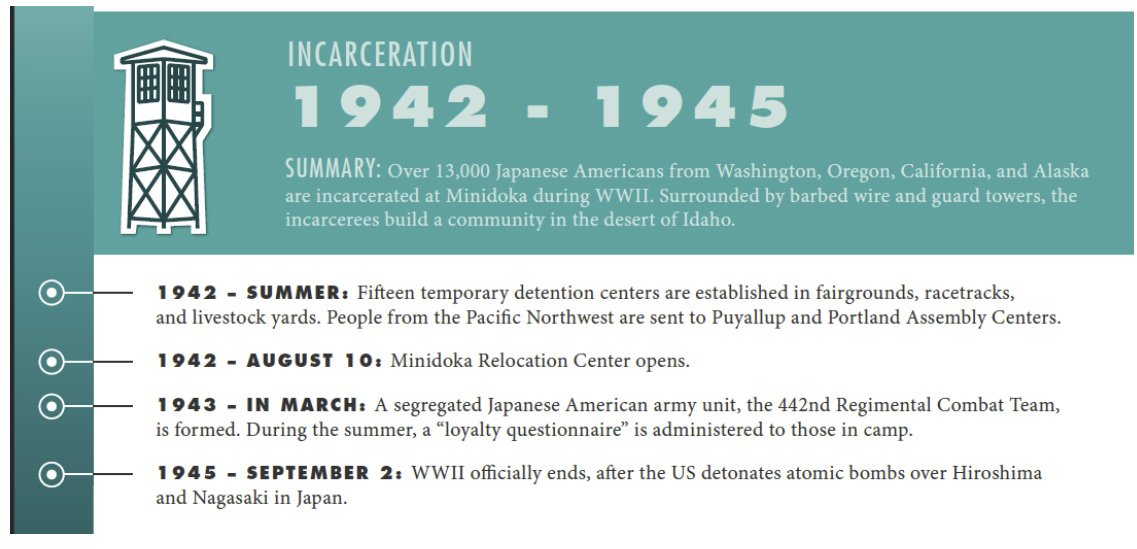Resources: Historical Timeline and Key Terms
Internment or incarceration? Just a few weeks ago, the Los Angeles Times published a story by Teresa Watanabe entitled, “No, my Japanese American parents were not ‘interned’ during WWII. They were incarcerated.” In the article, the writer describes the Watanabe family’s incarceration experience from her parents who were removed from Seattle to Minidoka concentration camp, to her grandfather who was imprisoned in an U.S. Army internment camp. Through the family stories, she distinguishes between “internment” and “incarceration” and how the Los Angeles Times is taking steps to accurately describe the WWII incarceration experience.
Just as the LA Times is pushing towards accurate language, education on the WWII incarceration of Japanese Americans must also recognize the power of our words. The Minidoka Educational Resources, by Friends of Minidoka, provides K-12 teachers with the tools and background knowledge to accurately teach the history surrounding the Japanese American incarceration. A good place for teachers to start in the “Key Terms” and “Historical Timeline” sections of the curriculum.
A “Key Terms” vocabulary list was created for both the teacher and students. The teacher list has over 40 terms that cover not just Japanese American history, but also academic terms such as “habeas corpus”, “due process”, and “redress” that are used throughout the lessons. The student list provides ten key words and phrases from “concentration camp” to Japanese American generational phrases like “issei”, “nisei”, and “sansei”.
These lists are meant to be a resource for students to refer to during each of the four lessons and short films. However, each lesson also highlights some key terms in the worksheets themselves to ensure vocabulary accessibility for various grade levels.
The “Historical Timelines” also vary in complexity between the teacher and student versions. For students, the historical timeline provides a two-page summary of incarceration history from immigration and exclusion, to remembrance today. Each of the five main sections has three to four dates that mark key moments in Japanese American history. Meanwhile, the teacher timeline provides a five-page deep dive into not just the incarceration, but also Asian American history, and modern day events related to civil liberties.
We recognize that words matter and through these resources teachers will be better equipped to put Minidoka’s history into the greater context of World history and use accurate terminology while they do it.
Learn more about the National Park Service’s terminology guide on the mass incarceration of Japanese Americans during WWII which inspired these resources.



